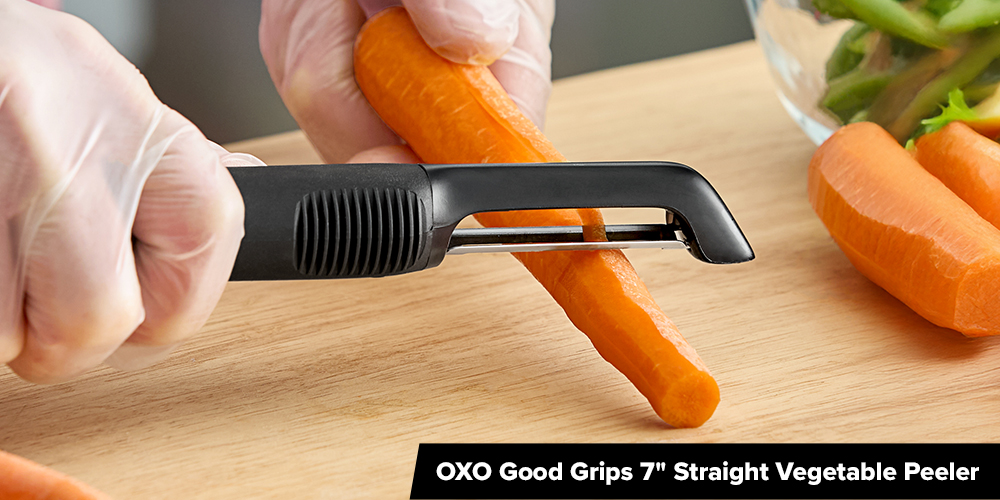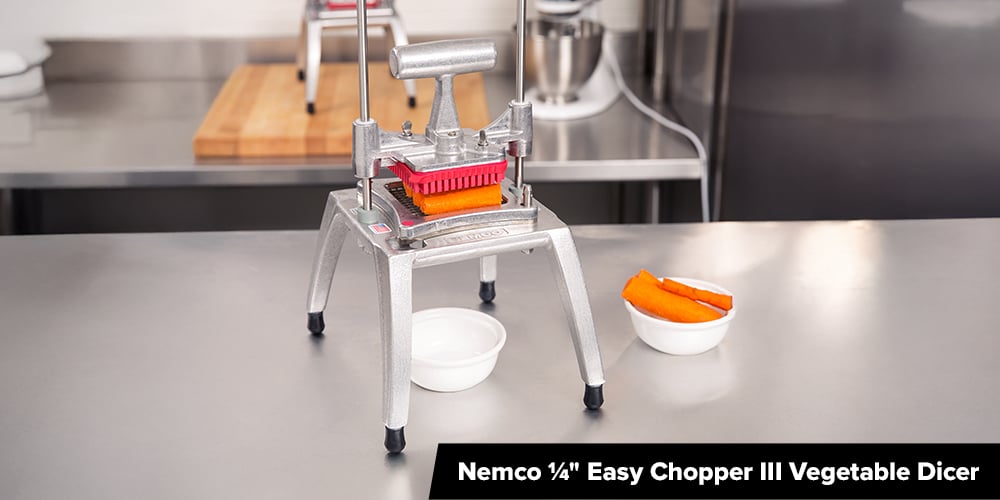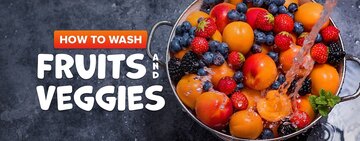Our selection process involves a thorough evaluation based on a clear list of criteria tailored to meet the demands of commercial kitchens. Whether operating a small cafe, a busy restaurant, or a high-volume food service operation, we carefully assess the slicers to match the requirements of your establishment. Additionally, we pay close attention to how the slicers will be used in a commercial setting. Understanding the workflow and demands of a busy foodservice environment is paramount when choosing the right vegetable slicer.
Vegetable Slicer Type
The term vegetable slicer refers to a range of styles, blade types, and functions, and as such, we wanted to ensure every type of slicer was evaluated. To offer a full range of options, we opened up our search based on slicers, dicers, mandolines, peelers, and wedgers.
- Vegetable slicers: Vegetable slicers are designed with long, flat blades that are ideal for general cutting or chopping tasks.
- Vegetable dicers: Vegetable dicers are characterized by a grid of sharp blades that are pressed down on vegetables to cut them into small, uniform pieces.
- Mandoline slicers: Mandoline slicers utilize a sharp blade, fixed in place at the bottom of a sturdy, slanted frame. They are used to create extremely thin slices of vegetables.
- Vegetable peelers: Vegetable peelers come in various sizes to accommodate different types of vegetables, featuring sharp, slotted blades that efficiently remove their outer skin.
- Vegetable wedgers: Vegetable wedges are designed with fixed blades that are usually arranged into four, six, or eight portions. These slicers are perfect for cutting vegetables into large, even wedges, making them suitable for dishes that require uniform pieces.
Vegetable Slicer Material
While most vegetable slicer blades are typically made from stainless steel to reduce the risk of corrosion when exposed to acidic ingredients, the overall construction of the unit can vary. We have identified aluminum, cast aluminum, stainless steel, and plastic as the most common materials used in commercial vegetable slicers and have evaluated their characteristics accordingly.
- Aluminum: Aluminum vegetable slicers provide a steady balance of durability and stability. They are naturally corrosion-resistant and built to last.
- Cast aluminum: Cast aluminum vegetable slicers boast a heavy, durable construction, making them highly resistant to wear and tear in busy kitchen environments. The material allows for additional flexibility when designing the unit.
- Stainless steel: Stainless steel vegetable slicers offer the most corrosion-resistant material available on the market. They boast a non-absorbent surface that ensures they do not retain odors or colors from food, maintaining a clean and hygienic food preparation environment.
- Plastic: Plastic vegetable slicers are the most economical option available, making them a popular choice for budget-conscious businesses. While plastic slicers may not offer the same level of durability as aluminum or stainless steel models, they are still easy to clean and maintain.
Vegetable Slicer Installation Type
Since each kitchen has a different layout and output needs, vegetable slicers must be able to be installed in different ways. We carefully examined each installation type to determine which types of kitchens would benefit most from them.
- Countertop slicers: Countertop slicers, or freestanding slicers, are versatile and can be placed on your counter or throughout your kitchen as needed. They offer flexibility for quick, on-the-fly cutting, making them ideal for kitchens where space is a premium.
- Surface-mounted slicers: Surface-mounted slicers are designed to be bolted into your counter, creating a fixed and permanent slicer in your kitchen layout. These slicers provide enhanced stability during operation, ensuring precise and consistent cuts.
- Wall-mounted slicers: Wall-mounted slicers are suitable for cutting specific types of vegetables, such as potatoes. These slicers are installed into the side of the wall, saving valuable counter space. They often feature a built-in lever or push handle, providing additional leverage for cutting tough vegetables efficiently.
Back to Top
When it comes to equipping your kitchen with the right tools, having the perfect vegetable slicer is imperative to ensure that each recipe is executed with precision. Not only does the right slicer simplify the food prep process, it also improves kitchen safety, reducing the risk of cutting- or chopping-related injuries.










